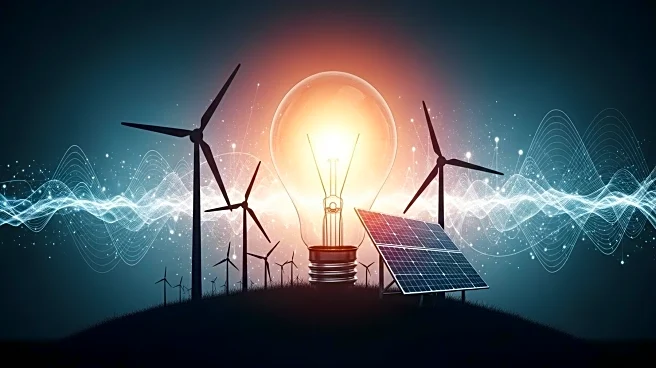What's Happening?
Brookfield Asset Management and Bloom Energy have announced a strategic partnership to invest $5 billion in AI infrastructure. This collaboration aims to build AI factories that integrate compute, power, and data center architecture. Bloom Energy's fuel cells will provide scalable and clean onsite power, while Brookfield will leverage its expertise in infrastructure development and financing. The partnership plans to address the growing power demands of AI data centers, which are expected to surpass 100 gigawatts by 2035. The initiative includes deploying Bloom's fuel cell technology globally, with a site in Europe to be announced soon.
Why It's Important?
The partnership between Brookfield and Bloom Energy is significant as it addresses the increasing power demands of AI data centers, which are crucial for the development of AI technologies. By investing in AI infrastructure, the collaboration aims to close the grid gap and provide reliable power solutions. This move is expected to benefit industries reliant on AI, such as data centers and semiconductor manufacturing, by ensuring they have the necessary power to operate efficiently. The partnership also highlights the growing importance of sustainable energy solutions in meeting the demands of modern technology.
What's Next?
Brookfield and Bloom Energy are set to announce a European site for their AI infrastructure project before the end of the year. As the partnership progresses, it is likely to attract interest from other stakeholders in the AI and energy sectors. The collaboration may also influence future investments in AI infrastructure, encouraging other companies to explore sustainable power solutions. Additionally, the partnership's success could lead to further expansion of Bloom Energy's fuel cell technology in other regions, potentially reshaping the landscape of AI infrastructure globally.
Beyond the Headlines
The partnership between Brookfield and Bloom Energy could have long-term implications for the energy sector, particularly in promoting the use of fuel cells as a sustainable power source. This development may encourage other companies to adopt similar technologies, contributing to a shift towards cleaner energy solutions. Furthermore, the collaboration highlights the need for innovative approaches to power generation, which could lead to advancements in energy technology and infrastructure design.











